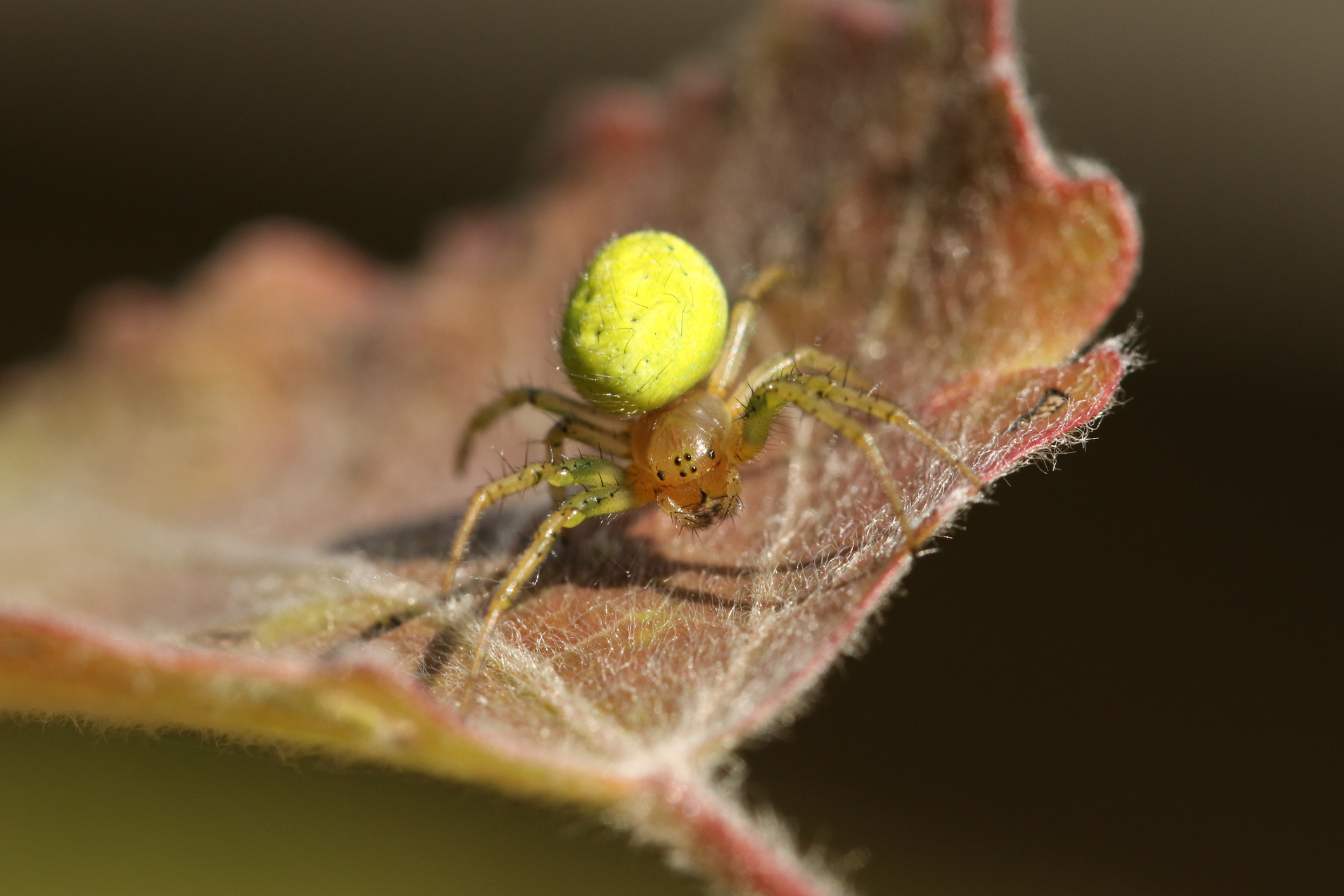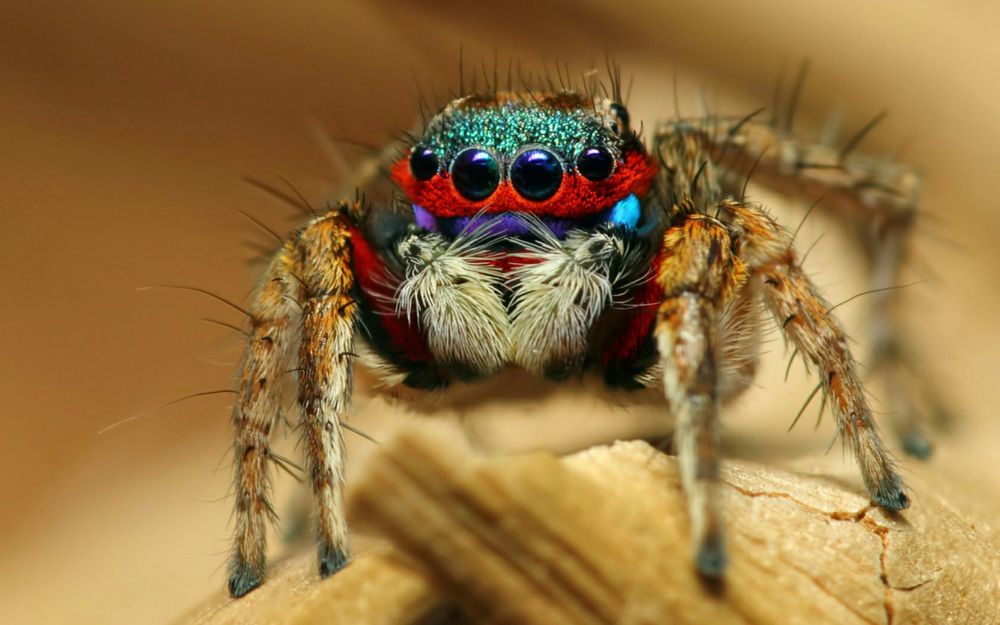See the 9 Most Colorful Spiders Found Crawling Around England

Spiders are often associated with drab, boring colors like brown and black. But did you know that England is home to some of the most colorful spiders in the world? These stunning arachnids come in all shapes and sizes, with vibrant hues ranging from bright reds and oranges to deep blues and purples. In this article, we’ll take a closer look at the nine most colorful spiders found crawling around England.
The Top 9 Most Colorful Spiders Found Crawling Around England

1. Zebra Spider
Appearance
The zebra spider (Salticus scenicus) gets its name from its distinctive black-and-white striped pattern. This tiny jumping spider measures just 5-7mm in length and is commonly found in grassy areas across England.
Habitat and Behavior
Zebra spiders are active hunters, using their excellent vision to spot prey and pounce on them with lightning-fast reflexes. They’re particularly fond of small insects like flies and aphids, and can be found lurking on blades of grass or other vegetation.
Interesting Facts
- Zebra spiders are known for their impressive leaping ability, which allows them to jump up to six times their body length.
- Despite their small size, zebra spiders have excellent eyesight and can see in almost 360 degrees.
2. Orchard Spider
Appearance
The orchard spider (Leucauge venusta) is a stunning arachnid with bright orange legs and a pale yellow abdomen. This spider measures around 6-8mm in length and is commonly found in gardens and orchards across England.
Habitat and Behavior
Orchard spiders are known for their intricate webs, which they spin between trees and bushes in order to catch flying insects like mosquitoes and midges. They’re also skilled hunters and will actively hunt down prey on the ground.
Interesting Facts
- The orchard spider is sometimes called the “pumpkin spider” because of its bright orange coloration.
- Females are larger than males and can lay up to 30 eggs at a time.
3. Cardinal Spider
Appearance
The cardinal spider (Tegenaria parietina) is one of the largest spiders found in England, with a leg span of up to 10cm. This arachnid has a distinctive reddish-brown coloration and can often be found hiding in dark corners or under rocks.
Habitat and Behavior
Cardinal spiders are nocturnal hunters, using their large size and impressive speed to catch prey like beetles and grasshoppers. They’re also known for their impressive silk spinning abilities, which they use to create funnel-shaped webs in order to catch flying insects.
Interesting Facts
- Despite their intimidating size, cardinal spiders are harmless to humans and are actually beneficial to have around, as they help control pest populations.
- Males can often be seen wandering around looking for females during mating season, which typically takes place in the autumn.
4. Wolf Spider
Appearance
The wolf spider (Pardosa amentata) is a large, robust arachnid with brown and black stripes on its legs. This spider measures between 8-16mm in length and is commonly found in grassy areas and woodlands across England.
Habitat and Behavior
Wolf spiders are active hunters, using their keen senses to track down prey like crickets and beetles. They’re also known for their exceptional eyesight, which allows them to see in almost complete darkness.
Interesting Facts
- Wolf spiders get their name from their hunting behavior, which is similar to that of wolves. They chase after prey and can run at speeds of up to 2 feet per second.
- Females carry their egg sacs with them wherever they go, often attaching them to the undersides of their bodies.
5. Green Orb-Weaver Spider
Appearance
The green orb-weaver spider (Araniella cucurbitina) is a small but stunning arachnid with bright green legs and a yellow-green abdomen. This spider measures between 4-6mm in length and is often found in gardens and meadows across England.
Habitat and Behavior
Green orb-weaver spiders are known for their intricate webs, which they spin between plants and bushes in order to catch flying insects like bees and wasps. They’re also skilled hunters and will actively hunt down prey on the ground.
Interesting Facts
- The green orb-weaver spider is sometimes called the “cucumber spider” because of its green coloration.
- Males have been observed performing elaborate courtship dances in order to attract females.
FAQs

What should I do if I find a colorful spider in my garden?
Don’t panic! Most spiders are harmless to humans and are actually beneficial to have around, as they helpcontrol pest populations. If you’re worried about a spider in your garden, try to identify it and do some research on its behavior and venomous potential. If you’re still concerned, consider contacting a professional pest control service.
Are any of these colorful spiders dangerous?
While all spiders have the potential to bite, most species found in England are harmless to humans. However, it’s important to exercise caution around unknown species and to seek medical attention if you experience symptoms like swelling or difficulty breathing after a spider bite.
What’s the best way to identify a spider?
The easiest way to identify a spider is by taking a photograph and doing some research online or consulting with a spider expert. Look for distinctive features like coloration, leg length, and eye arrangement to narrow down the possibilities.
How can I attract colorful spiders to my garden?
Planting flowers and other vegetation can help attract insects, which in turn will attract spiders. Consider planting species like marigolds, lavender, or sunflowers to create a spider-friendly environment.
Why are spiders important?
Spiders play a crucial role in controlling insect populations and maintaining ecological balance. They also serve as an important food source for many birds and mammals.
Conclusion

England may not be known for its colorful wildlife, but these stunning spiders prove that there’s more than meets the eye when it comes to arachnids. From the zebra spider’s striped pattern to the green orb-weaver’s vibrant legs, these arachnids are sure to impress even the most arachnophobic among us. So next time you’re out exploring nature, keep an eye out for these colorful crawlers – you never know what kind of beauty you might find.